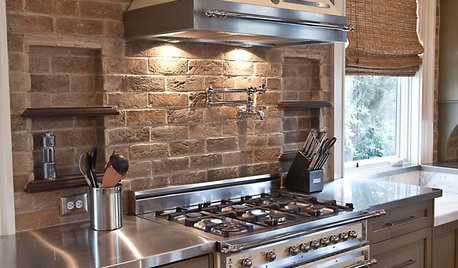Can vent hood installation be tested?
rph1234
10 years ago
Related Stories

REMODELING GUIDESContractor Tips: How to Install Tile
Before you pick up a single tile, pull from these tips for expert results
Full Story
MATERIALSThe Most Popular Roofing Material is Affordable and Easy to Install
Asphalt shingles, the most widely used roof material in the U.S. are reliable and efficient, and may be right for you
Full Story
LIFEHow Your Landscaping Can Keep Burglars Away
Prevent home break-ins with strategic landscaping and good practices instead of menacing — and maybe less effective — measures
Full Story
KITCHEN DESIGNYes, You Can Use Brick in the Kitchen
Quell your fears of cooking splashes, cleaning nightmares and dust with these tips from the pros
Full Story
KITCHEN DESIGNTrending Now: 25 Kitchen Photos Houzzers Can’t Get Enough Of
Use the kitchens that have been added to the most ideabooks in the last few months to inspire your dream project
Full Story
DOORS5 Questions to Ask Before Installing a Barn Door
Find out whether that barn door you love is the right solution for your space
Full Story
KITCHEN DESIGNA Cook’s 6 Tips for Buying Kitchen Appliances
An avid home chef answers tricky questions about choosing the right oven, stovetop, vent hood and more
Full Story
See How TVs Are Passing the Designer Test
Better-looking televisions and electronics come out of the armoire, into the room's design
Full Story
5 Stunning Modern Range Hoods
Today's kitchen range hoods can look like sleek sculptures. Here's what to look for when you go shopping for one
Full Story









rwiegand
rph1234Original Author
Related Professionals
Hammond Kitchen & Bathroom Designers · New Castle Kitchen & Bathroom Designers · North Versailles Kitchen & Bathroom Designers · Ocala Kitchen & Bathroom Designers · Palmetto Estates Kitchen & Bathroom Designers · Durham Kitchen & Bathroom Remodelers · Idaho Falls Kitchen & Bathroom Remodelers · Pasadena Kitchen & Bathroom Remodelers · Saint Helens Kitchen & Bathroom Remodelers · Wilmington Kitchen & Bathroom Remodelers · Gibsonton Kitchen & Bathroom Remodelers · Eureka Cabinets & Cabinetry · Gaffney Cabinets & Cabinetry · Graham Cabinets & Cabinetry · Worcester Plumberslive_wire_oak
attofarad
kaseki
rph1234Original Author
rwiegand
kaseki
rph1234Original Author